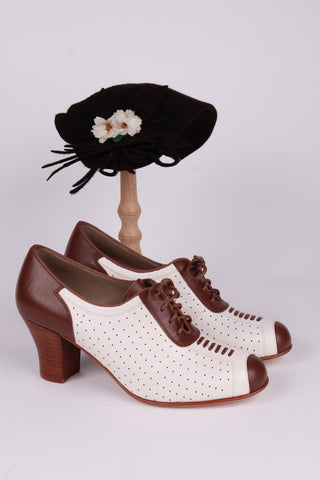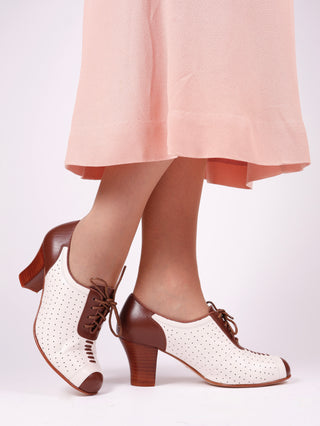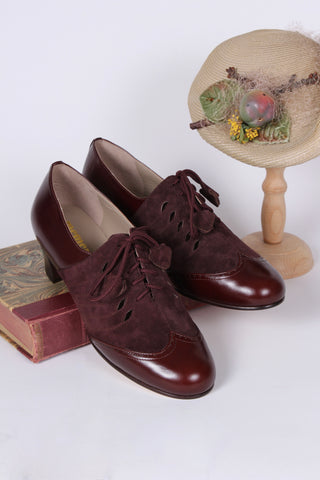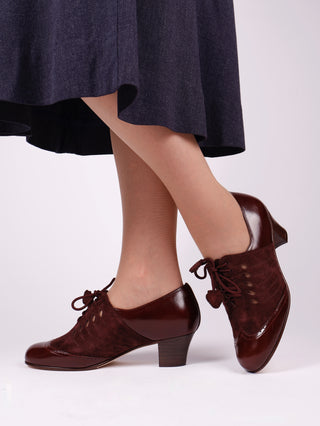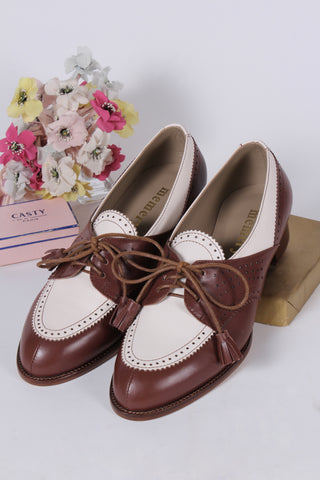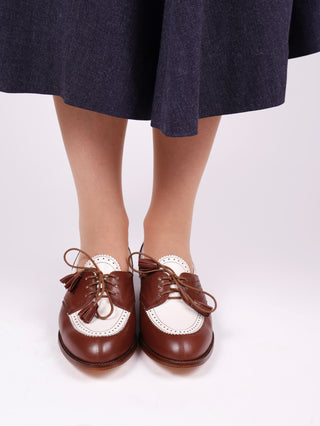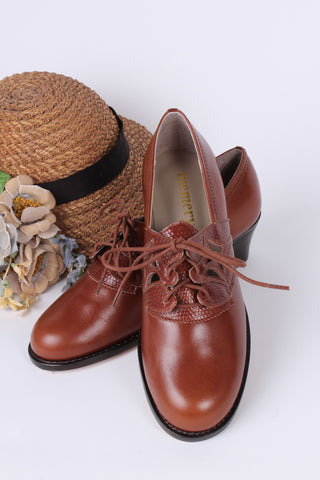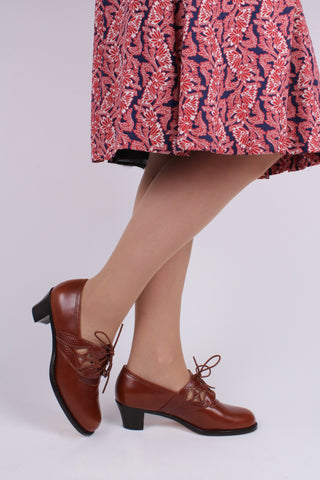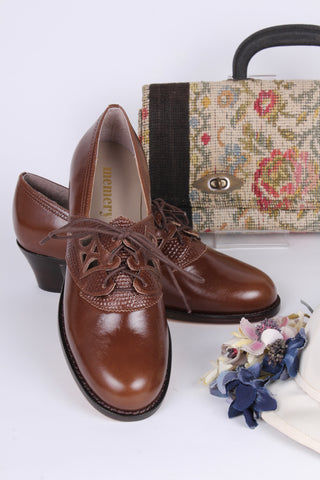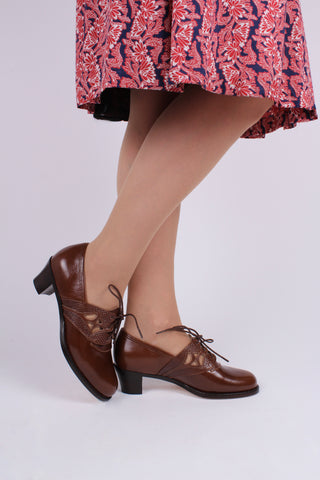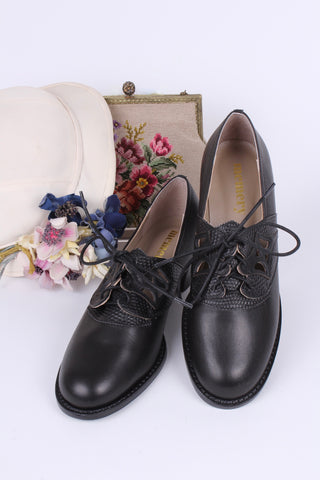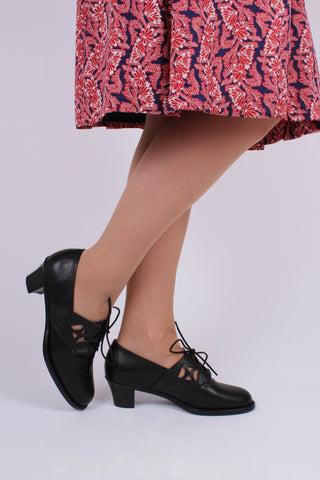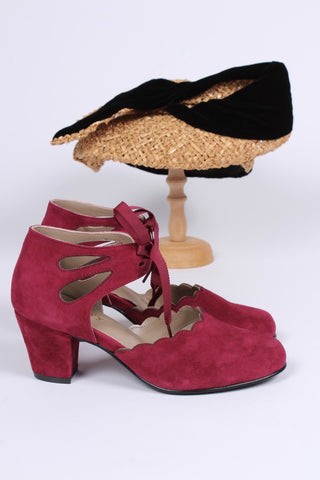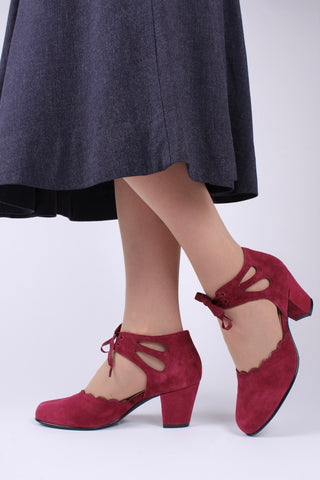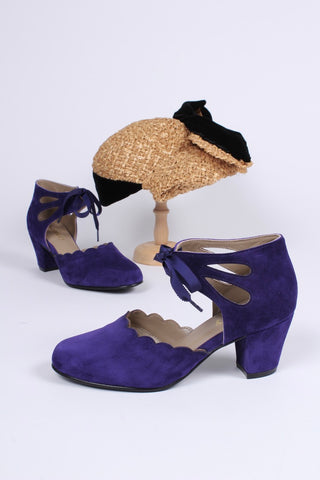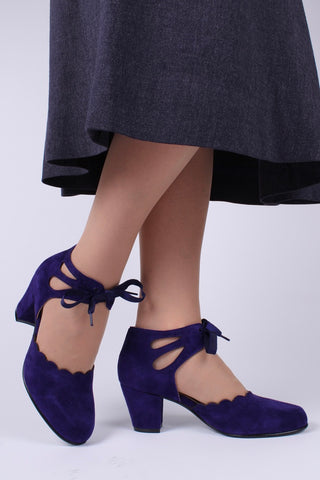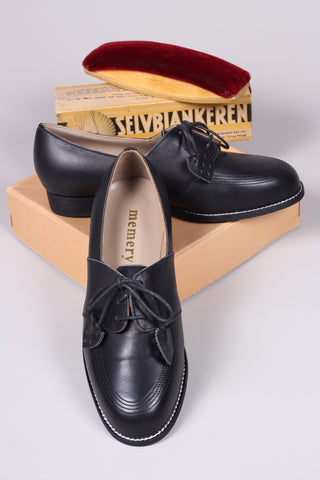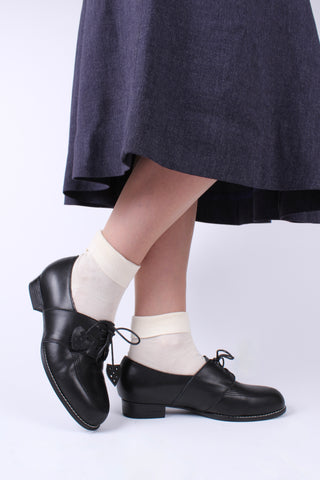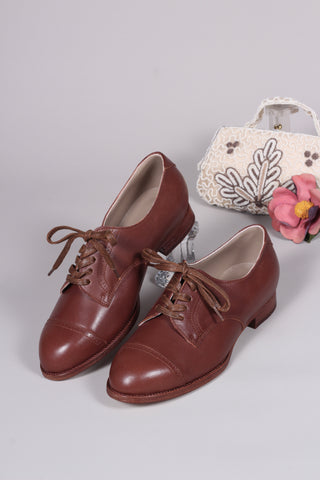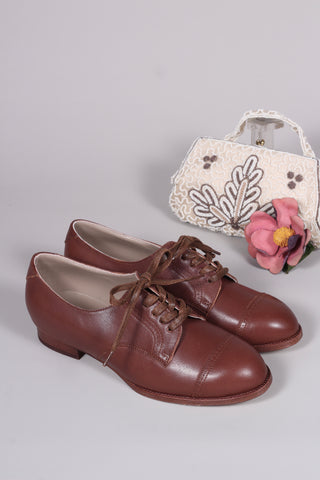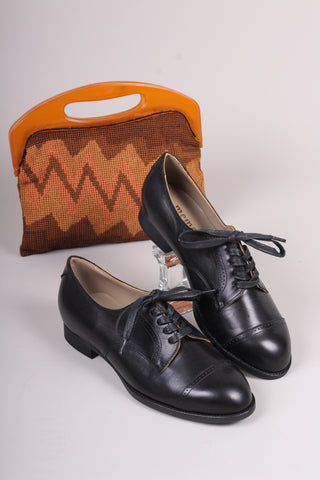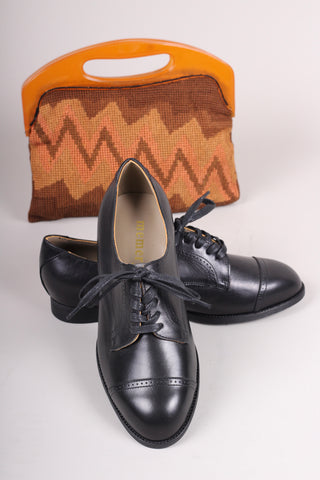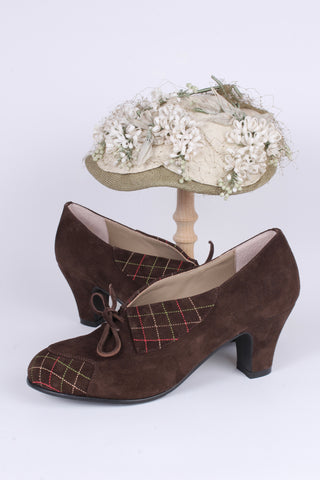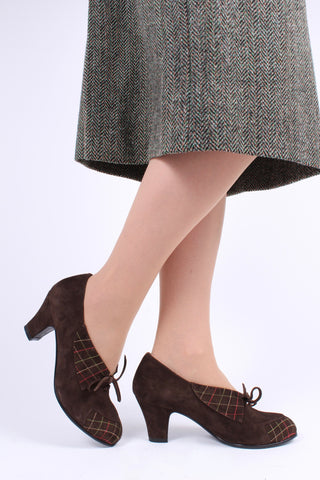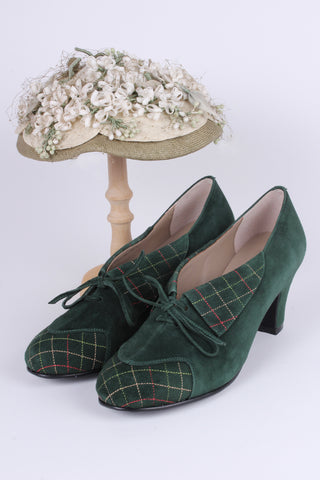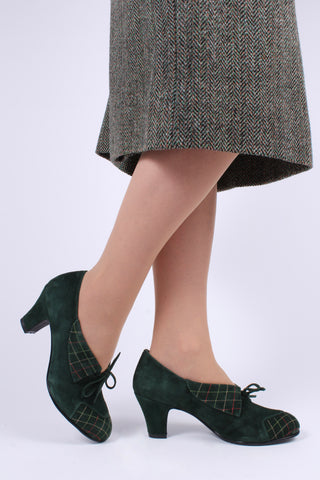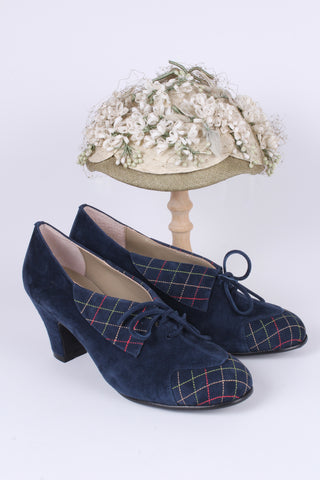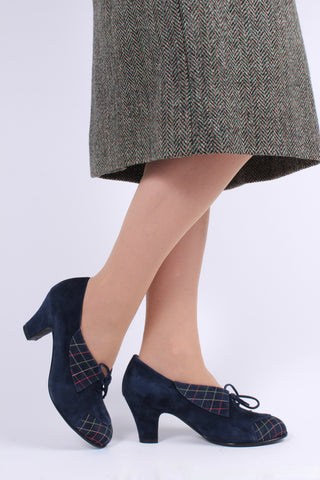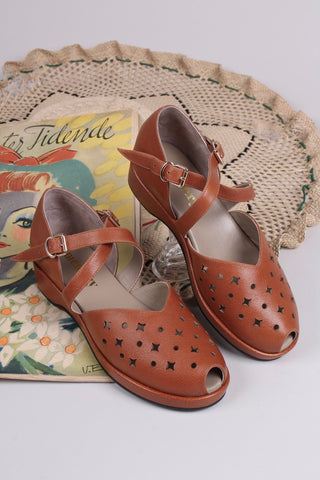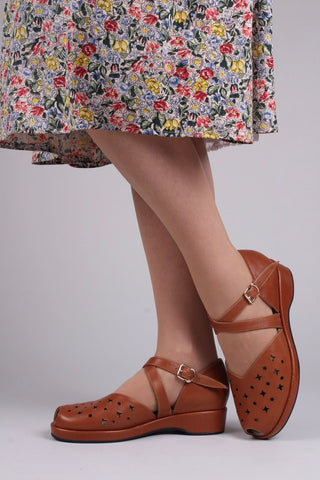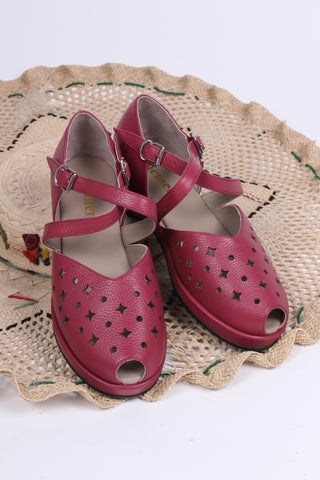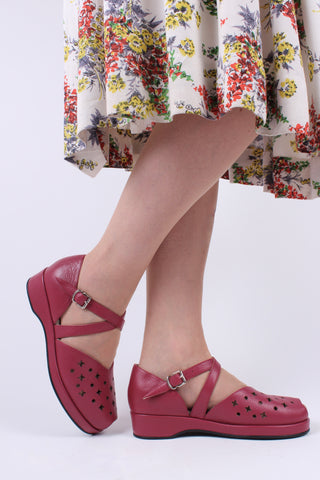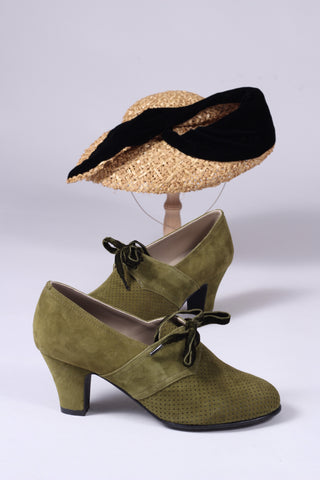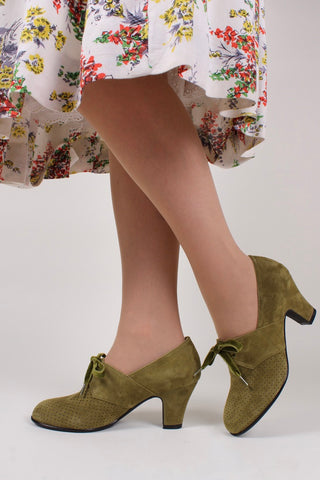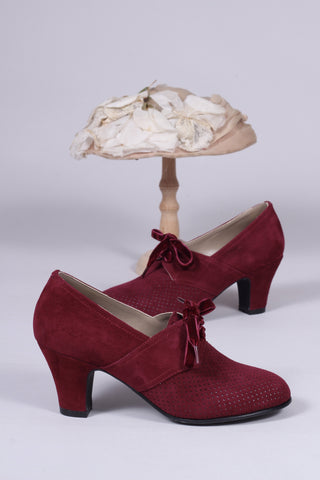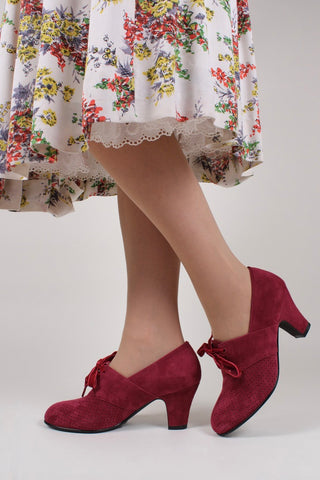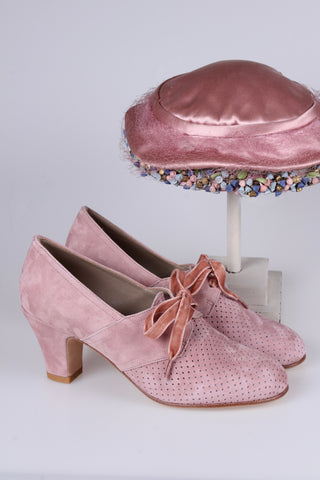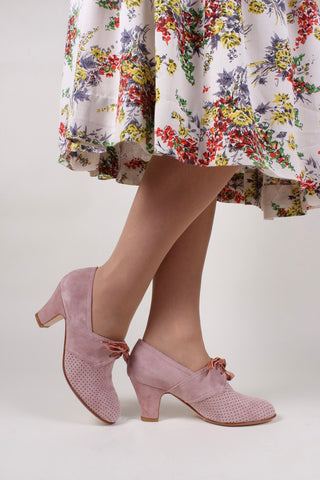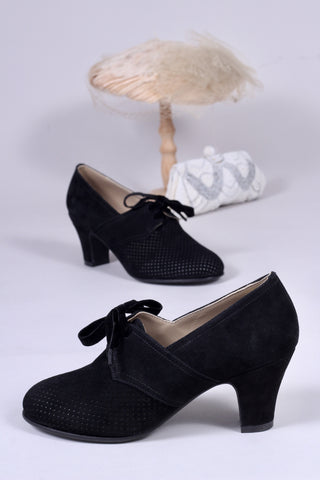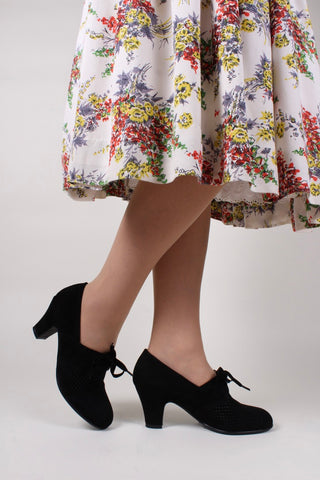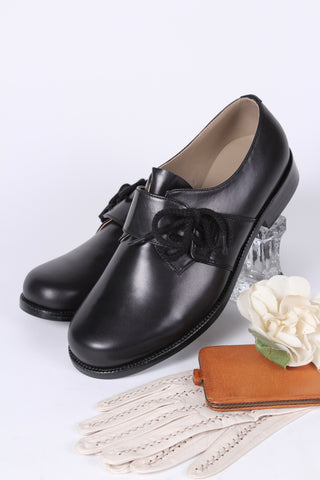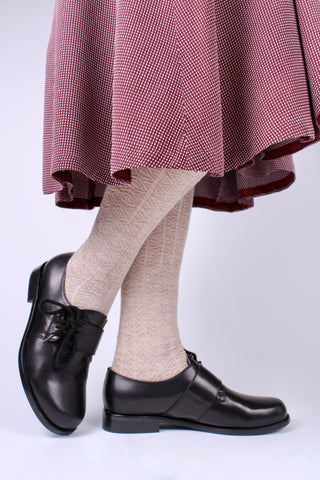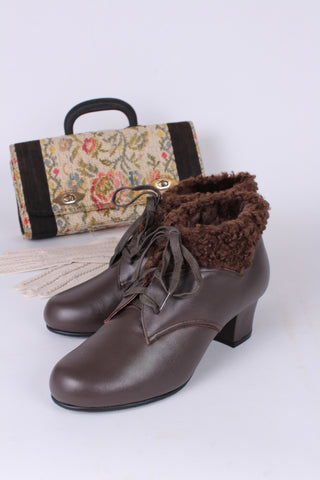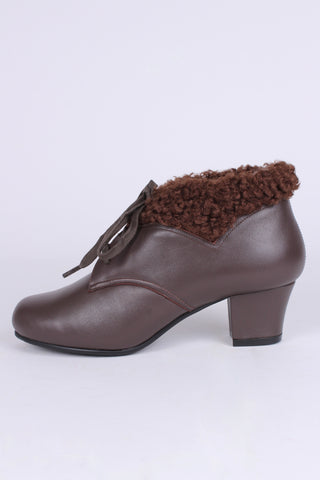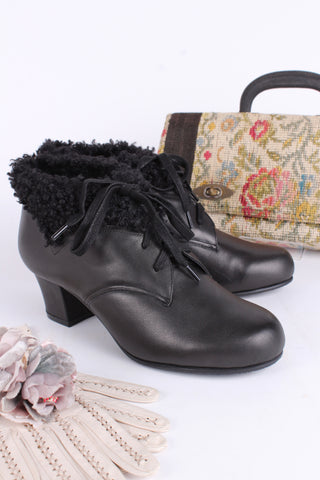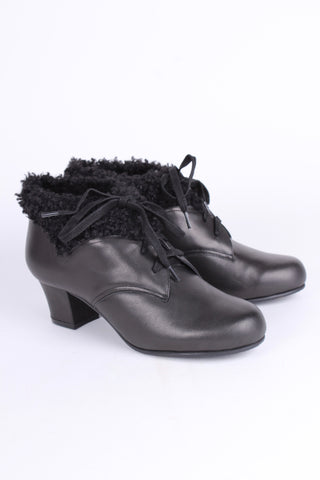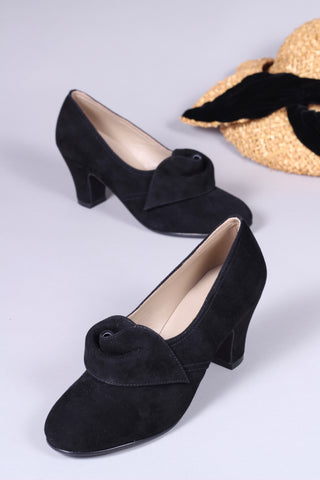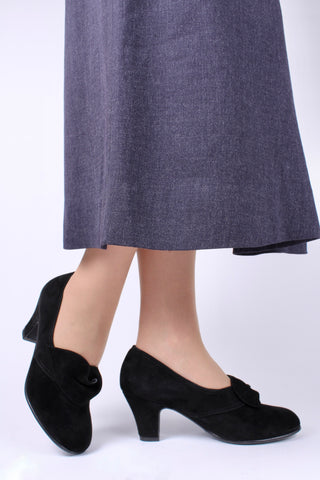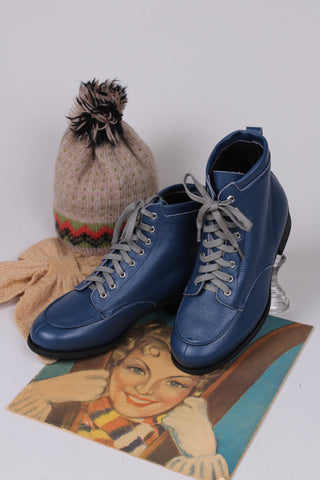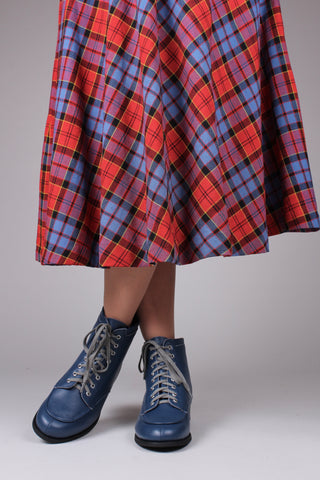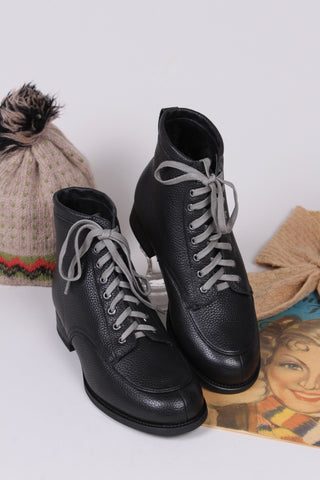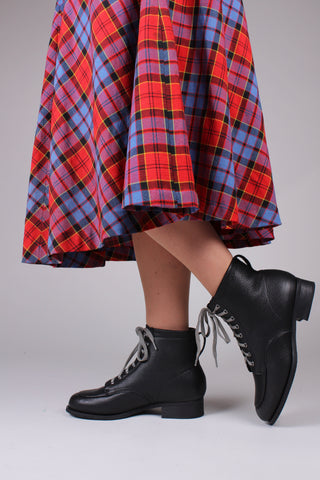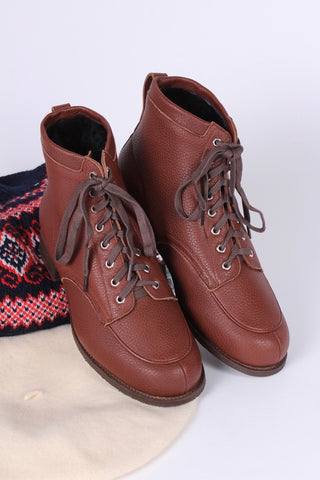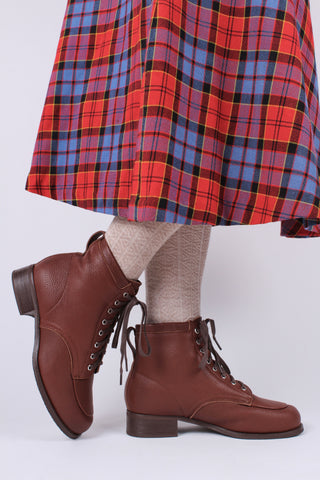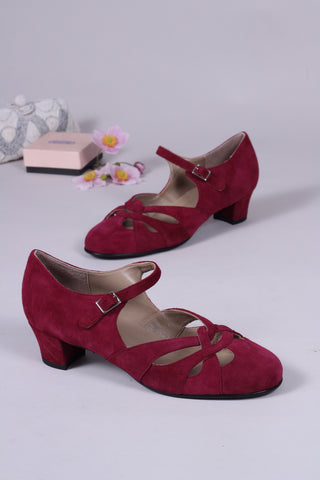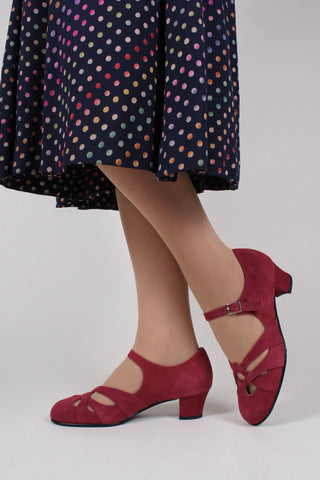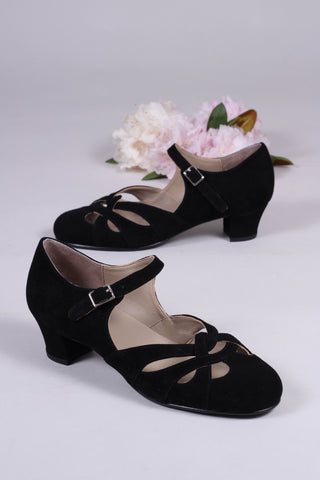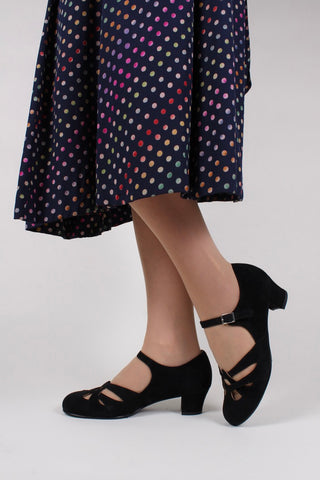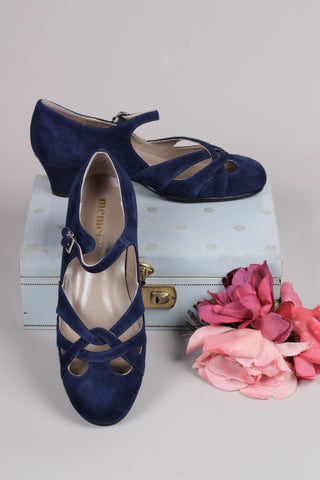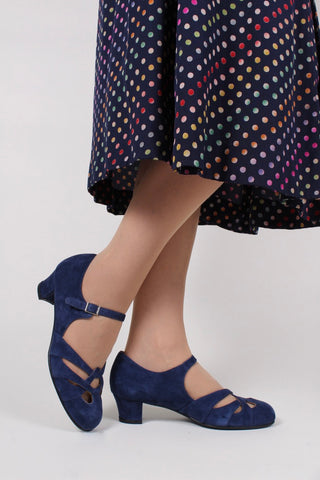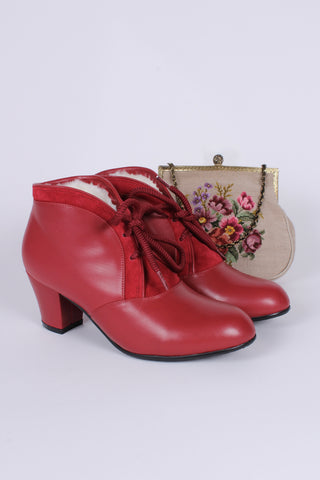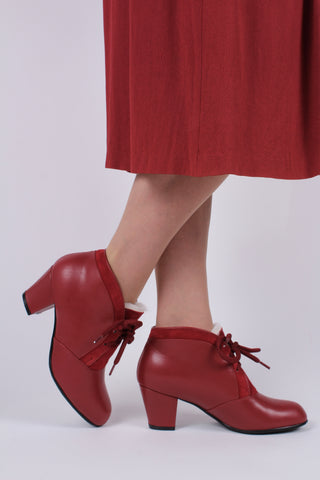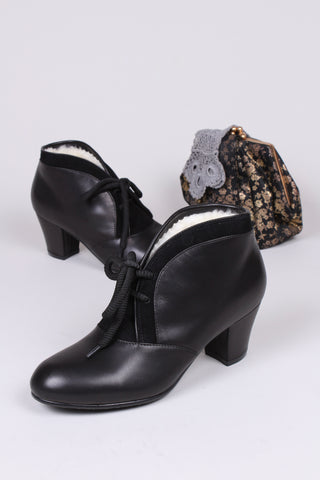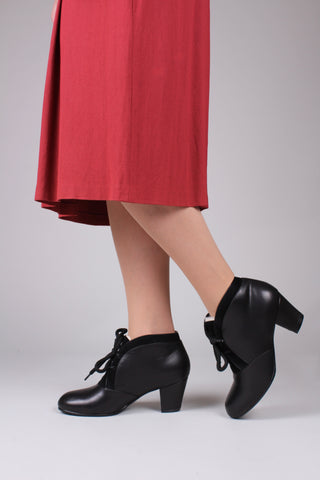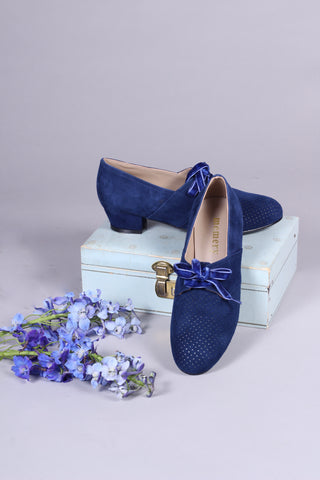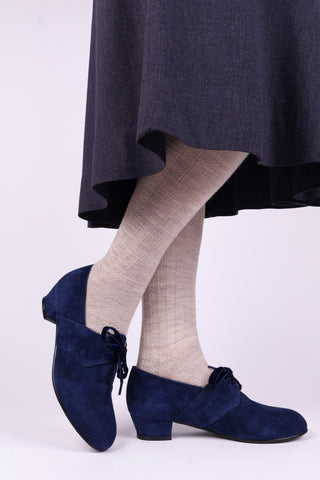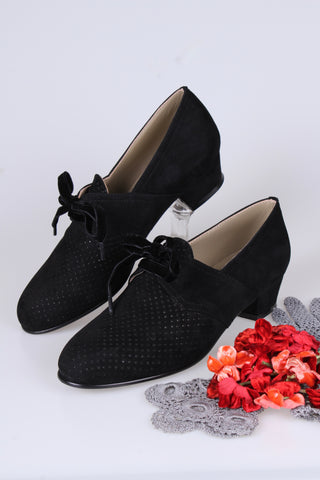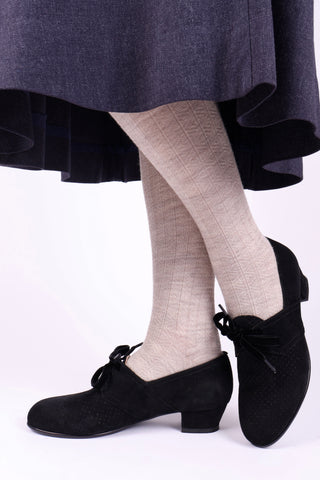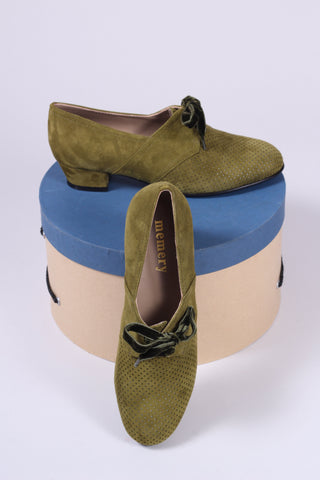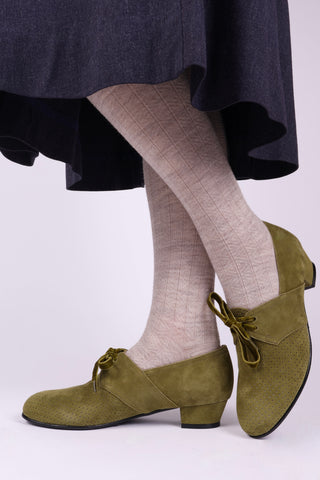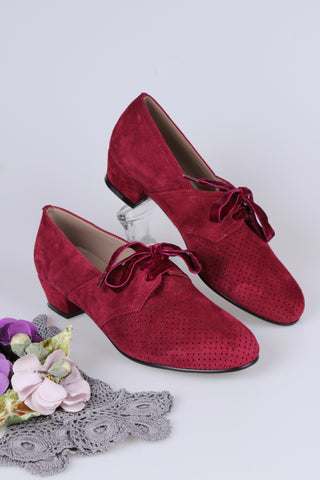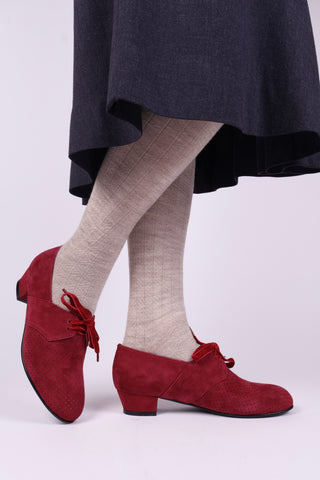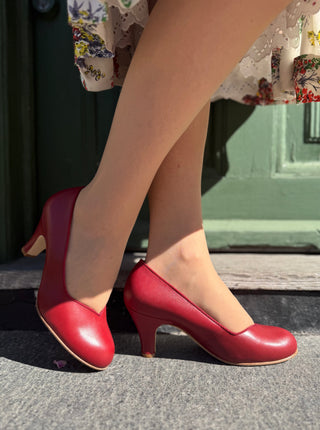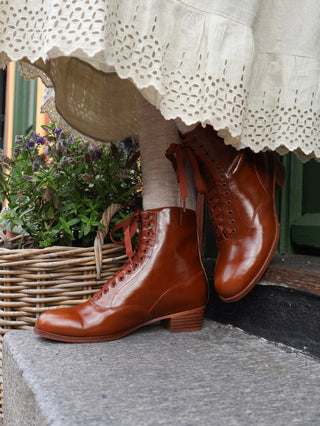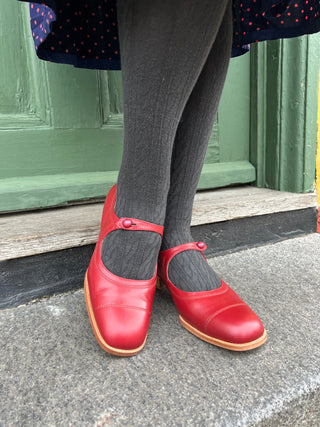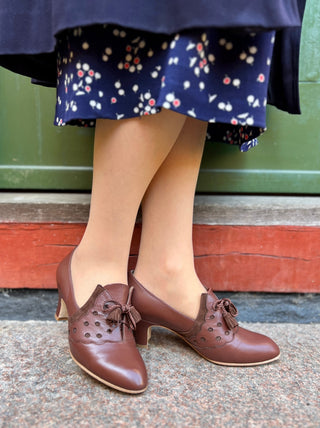1940s shoes
Shoes and boots inspired by the historic 1940s
Early 1940s everyday lace-up shoes - Cognac brown - Emily
€200,95
- Unit price
- /per
3 colors
Early 1940s everyday lace-up shoes - Nougat Brown - Emily
€200,95
- Unit price
- /per
3 colors
1940s style summer sandals / wedges - Burgundy / Raspberry - Norma
€160,95
- Unit price
- /per
2 colors
1940s pumps in suede with velvet laces - Burgundy red- Esther
€180,95
- Unit price
- /per
5 colors
1940s pumps in suede with velvet laces - Powder Rose - Esther
€180,95
- Unit price
- /per
5 colors
1940s pumps in suede with velvet laces - Navy blue - Esther
€180,95
- Unit price
- /per
5 colors
Soft 1940s /1950s booties with wool shearling - Dark Brown - Karin
€200,95
- Unit price
- /per
2 colors
Soft 1940s /1950s booties with wool shearling - black - Karin
€200,95
- Unit price
- /per
2 colors
1930s and 1940s winter snow boots with Fur lining - Blue - Rita
€214,95
- Unit price
- /per
3 colors
1930s and 1940s winter snow boots with Fur lining - Black - Rita
€214,95
- Unit price
- /per
3 colors
1930s and 1940s winter snow boots with Fur lining - Brown- Rita
€214,95
- Unit price
- /per
3 colors
Late 1930s / early 1940s suede shoes - Burgundy red - Ida
€200,95
- Unit price
- /per
3 colors
40s Derby shoes in suede - Low heel - Burgundy red -Esther
€180,95
- Unit price
- /per
4 colors
- 1
- 2
You’re viewing 1-40 of 77 products
FAQ: Footwear inspired by the iconic styles of the 1940s
Oxford shoes in black and brown remained a staple for both men and women. Due to leather shortages, materials like spotted hide, cork, and wood were often used for shoe soles. For women, elegant pumps became fashionable, with peep-toe designs being particularly popular in both sandals and pumps.
World War II rationing led to a functional and minimal style in fashion. Women typically wore knee-length skirts, tailored dresses with broad shoulders, and trousers for work. Military-inspired details, such as shoulder pads and khaki tones, were widely embraced. After the war, particularly with Christian Dior's "New Look" in 1947, feminine styles made a comeback, featuring voluminous skirts, narrow waists, and longer lengths.
Men’s fashion during the war featured simple, streamlined suits, often with high-waisted trousers and minimal detailing to conserve materials.
For women, a dress with broad shoulders or puffed sleeves, paired with an elegant brooch and a string of pearls, would be a perfect choice. Accessories like a clutch bag and peep-toe evening sandals will complete the look. Men can opt for a suit with high-waisted trousers, a vest, and a jacket with a pocket square. A tie, fedora hat, and Oxford shoes or leather boots in black or brown would be ideal for a 1940s-inspired outfit.
WWII soldiers typically wore heavy-duty military boots made from thick black or brown leather. These boots featured reinforced soles with metal studs and heel plates for added durability and traction. The design included a round toe cap and a narrow boot shaft with strong metal eyelets and thick laces for secure fastening.
1940s Fashion: How World War II Shaped Clothing Trends and Styles
Fashion in the 1940s was heavily shaped by the impact of World War II (1939-1945). With resources and materials in short supply, many nations introduced textile rationing, which pushed the fashion industry to adapt to more practical and modest styles. However, there was also a desire to maintain a sense of elegance whenever possible, as a way of resisting the hardships of war.
During the war, clothing emphasized functionality. As many women entered the workforce and took on roles traditionally held by men, trousers became more acceptable as everyday attire. Jumpsuits and overalls also gained popularity, especially for women working in factories or on farms. Durable fabrics like wool, cotton, and rayon were commonly used, while luxury materials like silk were reserved for war needs, such as making parachutes.
Rationing inspired creativity in women's wardrobes. The "Make Do and Mend" movement encouraged people to repair and repurpose old garments, or create new ones from recycled materials. Soldiers’ discarded parachutes, for example, were sometimes turned into wedding dresses or lingerie. Skirts became shorter to conserve fabric, typically falling at or just below the knee. Long coats, simple blouses, and A-line skirts became wardrobe staples. Accessories were often handmade from leftover materials like ribbons, fabric scraps, buttons, or even telephone cords to add a personal touch.
Military uniforms also left their mark on fashion, with tailored silhouettes and strong shoulders becoming popular. Shoulder pads created a distinctive look with broad shoulders and a slim waist. Despite the focus on practicality, elegance remained important. Women used makeup and hairstyles to express optimism and resilience. For special occasions, glamorous evening gowns were still worn, often embellished with small details like pearls or brooches for added sophistication.
After the war ended in 1945, fashion underwent a major shift. One of the most iconic changes came in 1947 with Christian Dior’s "New Look," which moved away from the wartime austerity. This style featured full, mid-calf skirts, narrow waists, and softly rounded shoulders. While using such large amounts of fabric seemed extravagant in a time when many parts of Europe were still recovering from the devastation of war, the "New Look" symbolized a desire to return to beauty, luxury, and normalcy after years of hardship.
Men's fashion during the 1940s was similarly influenced by the war. Many men were in military service and wore uniforms daily. Civilian men's clothing was also subject to rationing, resulting in simpler, more streamlined designs that used less fabric. Suits became more minimalist, with fewer embellishments like cuffs and pocket flaps. Trousers were high-waisted and had a straight or slightly narrow cut. Hats, such as the fedora, remained a key accessory, and more casual items like sweaters and sports jackets became common.
Shoes, like clothing, were rationed and had to be practical and long-lasting. With leather in short supply, alternative materials such as cork or wood were used for soles, and spotted hide was substituted for leather. The practical Oxford shoe remained popular for both men and women. After the war, more glamorous styles of footwear returned, including high-heeled shoes for women, particularly evening sandals with cut-out designs and peep-toes.


